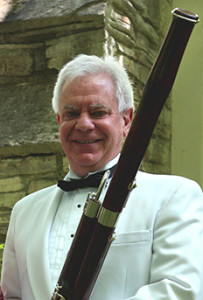 One of the most often question I’m asked involves the way in which we develop our choice of music. In other words, how do we come up with our programs?
One of the most often question I’m asked involves the way in which we develop our choice of music. In other words, how do we come up with our programs?
That topic is very much on our minds at this time of year as we plan our next season. I think our programming has been particularly good over the last two years, so I feel a little bit of trepidation at the thought of having to live up to a kind of standard that those who attend our concerts have come to expect. Fortunately, some good ideas are on the radar, so I thought I would share with you how this happens.
For the past several years I have developed a kind of wish list. Anytime I hear of something interesting, I put it on this list. We pulled some items from this list over the past couple of years, but there are many that remain unused. To this list we continue to add items.
When I say we, I mean – first of all – my colleague, Allyson Fleck and myself. Ideas also come from other players, and Allyson just sent me a list of works some of them had mentioned to her that were on their wish list. John Fairfield, our horn player, never disappoints. He occasionally forwards a work that he has heard on the radio.
Recently, I had a discussion with our 18-year-old composer friend, Jacob Beranek, whose Violin Sonata we performed this season. He loves Czech music and gave me some interesting suggestions from that repertoire.
Beyond that, I save mailings I get from different music groups, which I scour for ideas. On my desk, for instance, is a season brochure for the Pilgrim Chamber Players in Chicago. They always have some interesting aspects to their programming.
Additionally, I have several favorite haunts. One of these you can peruse yourself by visiting www.editionsilvertrust.com/whats-new.htm. Ray Silvertrust reprints out-of-print editions that he obtains from libraries. His catalogue continues to expand at an exponential rate, so whenever I go there, I can expect to find something new and interesting. He also frequently offers soundbites of the music, so one can get a sense of the piece and its style.
Finally, we go to our own repertoire list. We keep a list of every work we have ever performed and in what years (some we have performed multiple times). We will always bring back the best of these works if they haven’t been performed in a while. These are the absolute standards of the repertoire plus some very interesting “finds” from previous years.
That leads to the last step—bringing works together and matching the programs with venues. We are contracting with venues for the coming year. That is where the rubber meets the road. That is where budget considerations come into play and reality hits. And, that is where alchemy is the secret ingredient. That is a whole other story, maybe for another time. Stay tuned, but feel free to start getting excited. I am.
James T. Berkenstock
